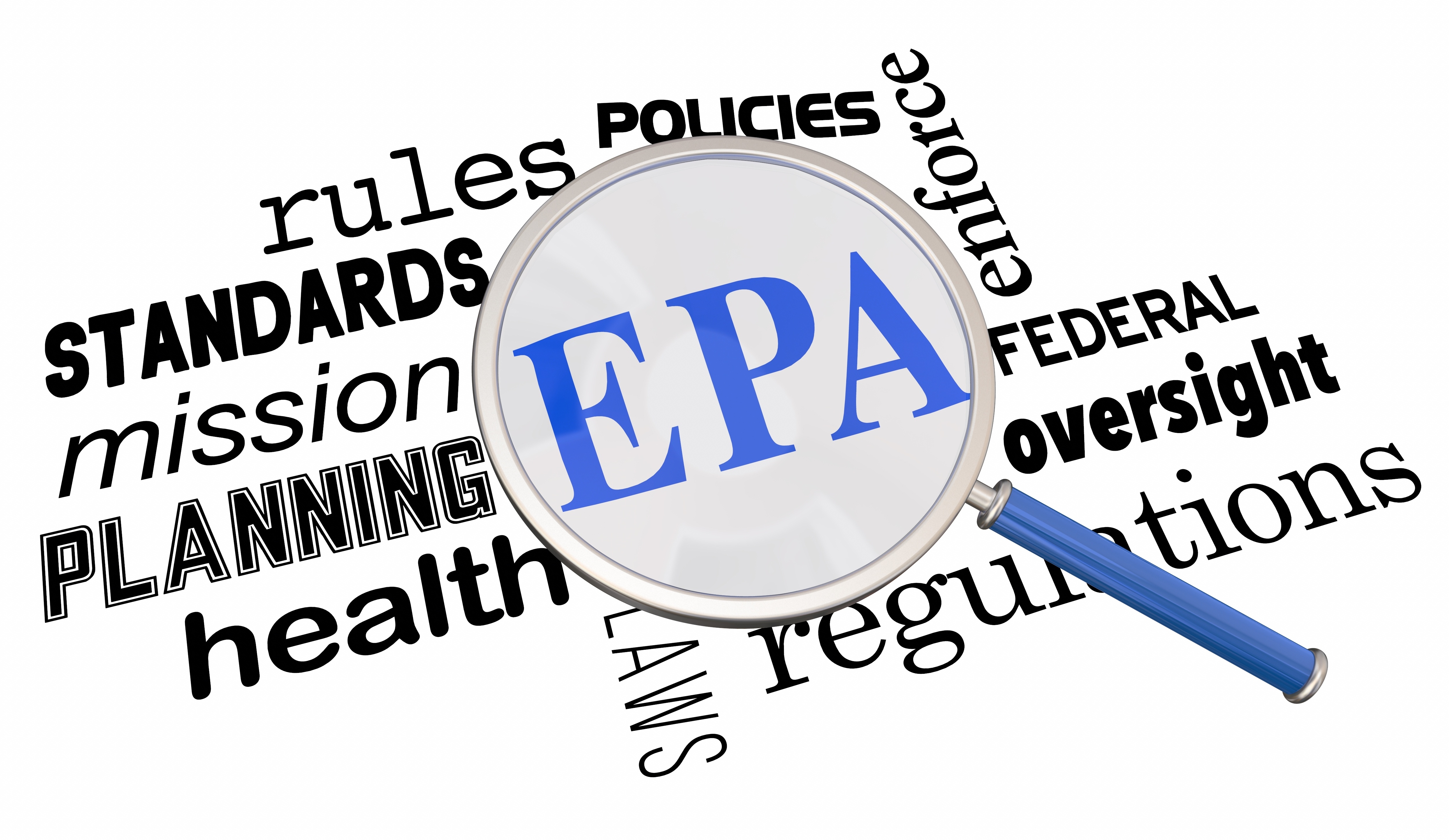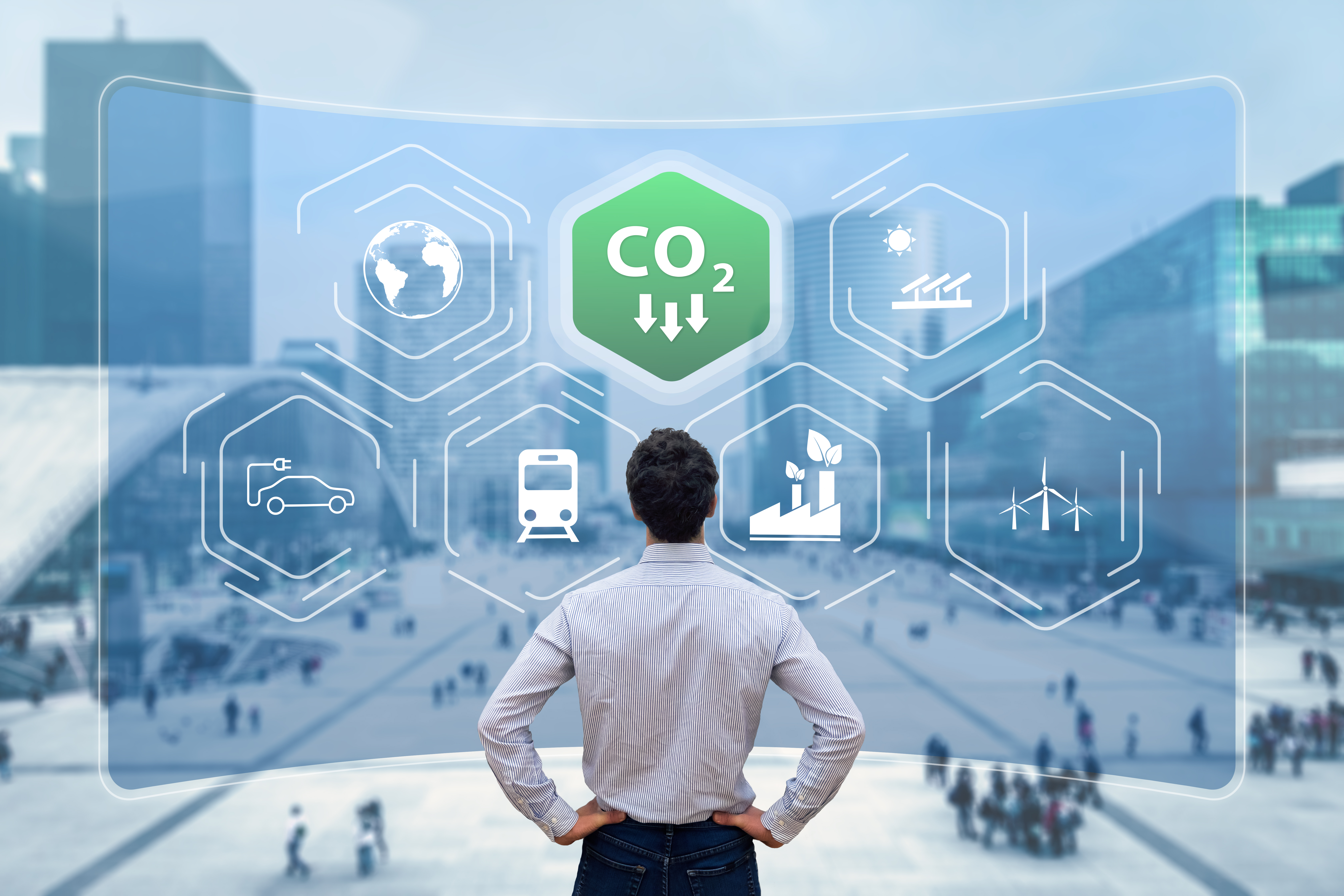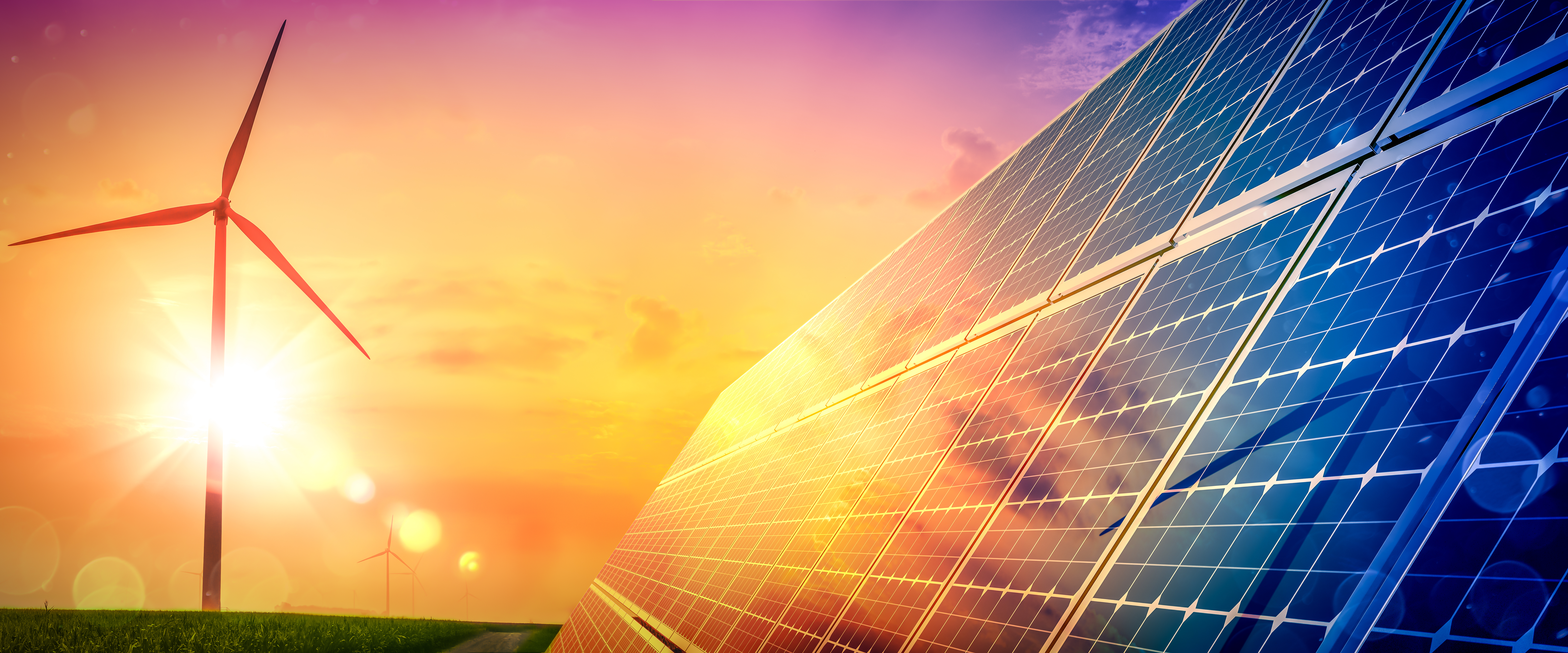This week, EPA Director Zeldin announced that the EPA would be rescinding the Greenhouse Gas Endangerment Finding. The Endangerment Finding states that certain gasses in the atmosphere pose an eminent risk to public health (carbon dioxide, methane, nitrous oxide, PFCs, HFCs, etc).
ESG & Industry Updates
EPA Announces intent to Rescind Greenhouse Gas Endangerment Finding
Posted by Kelly Burke on Aug 1, 2025 5:49:36 PM
Topics: EPA, methane, Carbon Emissions, HFCs, PFC, Trump Administration, Biden Administration, Inflation Reduction Act, ACT
First - a reminder - Tariffs are (as of writing) still set to kick in this weekend on all imports from Mexico and Canada, and thus far they do not exempt oil imports from Canada, which could impact New England over the next several weeks, barring updates. We won't know what, if any, impacts there will be until early next week, most likely. Petitions are pending to exempt oil imports from the tariffs but there has not been any publicly confirmed change on that by the Administration as of Friday afternoon. Additionally, there are looming questions about price impacts on electricity in Northern New England that is Canadian sourced and whether that would be subject to the same 25% tariff.
Topics: EPA, Climate Change, tariff, Trump Administration, Biden Administration, paris accord, offshore wind, ev
The change in Presidential Administrations this December-January season has left an unprecedented amount of issues open across the transition period, including a multitude that specifically affect the Energy and Transportation Industries. Truth be told, there are too many items up in the air to cover where we are on all of them in one update, so we will try our best and keep you posted as the news cycles turn.
Topics: Carbon Emissions, tariff, Trump Administration, Biden Administration, ZEV
IRA Act & Energy Credit Clarification Waiting on Election Cycle
Posted by Kelly Burke on Nov 4, 2024 4:15:00 AM
As we round into 2025, and the election day preceding it, we thought it would be helpful to highlight energy related tax, credit, and funding items that either have an expiration looming December 31, 2024, are slated to kick on January 1, 2025... OR that have their passage or continuation hanging in the balance depending on how the election goes. If you're in Massachusetts, there are a host of additional items on the horizon, by the way, the following are Federal Level items:
Topics: Biodiesel Tax Credit, Biodiesel, Carbon Emissions, Trump Administration, Biden Administration, Inflation Reduction Act, Carbon Capture, Clean Fuel Production Credit, renewable diesel
As we have been discussing, the US National Blueprint for Transportation Decarbonization breaks the Transportation sector into seven categories, each of which has its own targets for emission reduction/elimination, and strategies for how those declines in emissions will be achieved. The next category addressed in the Blueprint is pipelines.
Topics: methane, Carbon Emissions, Biden Administration, decarbonization, pipeline
Transportation DeCarbonization: Aviation Policy & Regulations
Posted by Kelly Burke on Sep 26, 2023 7:15:00 AM
As we have been discussing, the US National Blueprint for Transportation Decarbonization breaks the Transportation sector into seven categories, each of which has its own targets for emission reduction/elimination, and strategies for how those declines in emissions will be achieved. The next category address in the Blueprint is Aviation.
Topics: Climate Change, Biden Administration, decarbonization
As we have been discussing, the US National Blueprint for Transportation Decarbonization breaks the Transportation sector into seven categories, each of which has its own targets for emission reduction/elimination, and strategies for how those declines in emissions will be achieved. The next category addressed in the Blueprint by emissions % is the Maritime Sector.
Topics: Marinas, Emissions, Biden Administration, Carbon Capture, decarbonization
Independent research organization Climate Central published a report recently that showed how the national capacity for solar and wind generated power shot up in 2022. The report comes just as the Biden Administration begins rolling out billions of dollars to renewable energy projects as part of its commitment to decarbonizing the grid completely by 2030 and getting the US to net zero emission by 2050.
Topics: Solar, Carbon Emissions, renewable energy, Biden Administration, offshore wind, decarbonization
Topics: EPA, Carbon Emissions, railcar regulations, renewable energy, Biden Administration, decarbonization
Transportation Decarbonization: Off-Road Vehicles and Mobile Equipment
Posted by Kelly Burke on Feb 6, 2023 12:48:53 PM
As we have been discussing, the US National Blueprint for Transportation Decarbonization breaks the Transportation sector into seven categories, each of which has its own targets for emission reduction/elimination, and strategies for how those declines in emissions will be achieved. The next category addressed in the Blueprint by emissions % is Off-Road Vehicles and Mobile Equipment.
The Off-Road Vehicles and Mobil Equipment segment includes a LOT, from heavy mine drilling equipment and excavators to dirt bikes and lawn mowers. The off-road segment is accountable for approximately 10% of emissions, but where 79% of the segment uses diesel, the changes that would be applicable to the medium and heavy duty (on road) sector would carry over fairly cleanly to the off-road sector, which is why they make sense to address in tandem. We saw a similar approach to this with the transition to ultra low sulfur diesel – the initial priority was on road vehicles, as they are more uniform in fuel technology requirements and also contribute more on emissions. Once the tech is there for on-road, its fairly simple to adopt it down into the off-road sector for diesel fueled equipment.
Topics: EPA, Carbon Emissions, Biden Administration, decarbonization
Subscribe to Email Updates
Recent Posts
Posts by Topic
- Carbon Emissions (42)
- Climate Change (32)
- renewable energy (31)
- Oil & Energy Magazine (27)
- EPA (24)
- Massachusetts (21)
- Biden Administration (18)
- decarbonization (15)
- Biodiesel (12)
- natural gas (12)
- EPA Mandate (11)
- RFS (11)
- Solar (11)
- Biofuels (10)
- Keystone XL (10)
- methane (10)
- offshore wind (9)
- Clean Energy (8)
- Energy Independence (8)
- Energy Infrastructure (8)
- Safety (8)
- Biodiesel Tax Credit (7)
- Emissions (7)
- Ethanol (7)
- ev (7)
- Cellulosic Ethanol (6)
- EV Charger (6)
- RINs (6)
- Trump Administration (6)
- environmental justice (6)
- Fracking (5)
- Inflation Reduction Act (5)
- Technology (5)
- US Crude Exports (5)
- electric vehicles (5)
- maine (5)
- tesla (5)
- ACT (4)
- Mass DOER (4)
- TransCanada (4)
- Utility Rates (4)
- battery (4)
- fuel management (4)
- massachusetts biodiesel mandate (4)
- obama (4)
- paris accord (4)
- remote tank monitoring (4)
- CARB (3)
- CRUDE (3)
- Carbon Capture (3)
- Clean Fuel Production Credit (3)
- E85 (3)
- Emergency Fuel (3)
- Massachusetts Clean Cities (3)
- Waste Feedstock Biodiesel (3)
- china (3)
- clean power plan (3)
- net-zero (3)
- renewable diesel (3)
- solid state battery (3)
- AI (2)
- AVs (2)
- Bioheat (2)
- Commodities (2)
- Congress (2)
- Customer Service (2)
- DOT (2)
- EIA (2)
- Emergency Generator Program (2)
- HFCs (2)
- Hurricane Sandy (2)
- IMO 2020 (2)
- MIT (2)
- Marinas (2)
- New York (2)
- Refinery Closures (2)
- Safe Driving Policy (2)
- TCI (2)
- US Energy Boom (2)
- ZEV (2)
- autonomous vehicles (2)
- clean air act (2)
- coal (2)
- driver shortage (2)
- electricity rates (2)
- emergency response (2)
- environment (2)
- ferc (2)
- geothermal (2)
- hydro-electric (2)
- hydrogen (2)
- national grid (2)
- net metering (2)
- power plant emissions (2)
- railcar regulations (2)
- tariff (2)
- vineyard wind (2)
- API (1)
- Air conditioning (1)
- Baiji Refinery (1)
- Blend Wall (1)
- Brent Crude (1)
- Brent vs WTI (1)
- CFCs (1)
- Cell Phone Policy (1)
- Clean Water Act (1)
- DEF (1)
- Election Results (1)
- Electrical Grid (1)
- Energy Efficiency (1)
- Environmental Impact Study (1)
- Environmentally Friendly Products (1)
- Ethanol Tax Credit (1)
- FEMA (1)
- Fiscal Cliff (1)
- Gas Tax (1)
- Gasoline Supply Crunch (1)
- HDVC (1)
- Hazmat (1)
- Heat Tax (1)
- Highway Trust Fund (1)
- Holyoke (1)
- Hybrid (1)
- ISIS (1)
- Iraq (1)
- Kigali Amendment (1)
- MOC (1)
- Market analysis (1)
- Mayflower (1)
- Montreal Protocol (1)
- NORA (1)
- Natural Gas Pipeline Explosion (1)
- New Jersey (1)
- Oil Barrel Tax (1)
- PFC (1)
- Pegasus Pipeline (1)
- Propane Autogas (1)
- Stimulus (1)
- Syria (1)
- Tank Truck Safety Training (1)
- Tax Increases (1)
- Tier 3 Gasoline Standard (1)
- Times Square (1)
- VEEP (1)
- Workplace Risk (1)
- agriculture (1)
- algonquin pipeline (1)
- alternative energy (1)
- altwheels (1)
- astm (1)
- bionic leaf (1)
- bitcoin (1)
- boston (1)
- clean heat standard (1)
- covid-19 (1)
- energy storage (1)
- eversource (1)
- export ban (1)
- fixed pricing (1)
- fuel (1)
- fuel efficiency (1)
- fuel marketers news (1)
- gas leaks (1)
- heating oil (1)
- hurricane harvey (1)
- inflation (1)
- irving oil (1)
- marketing (1)
- nuclear (1)
- online fuel buying (1)
- ozone (1)
- photovoltaic (1)
- pilot program (1)
- pipeline (1)
- power plants (1)
- propane (1)
- renewable natural gas (1)
- russia (1)
- sanctions (1)
- senate (1)
- shale (1)
- social media (1)
- social media for business (1)
- space (1)
- tablets (1)
- tennessee pipeline (1)
- ukraine, (1)
- value added services (1)






